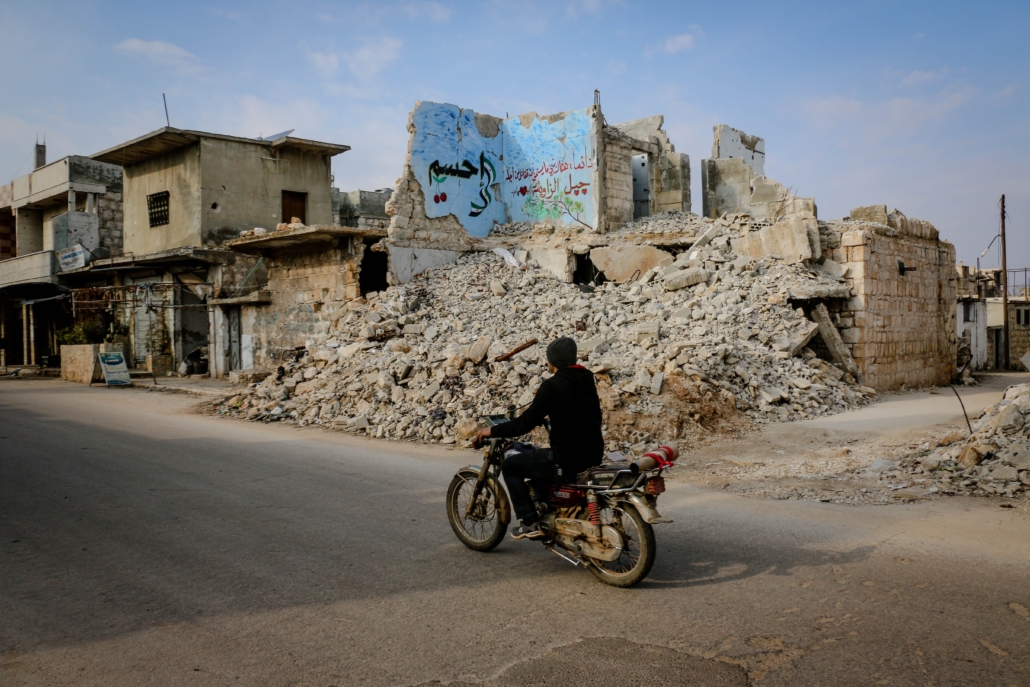Addressing Diseases Impacting Syria
 Syria, a nation with a rich cultural history tragically torn apart by years of conflict, has faced a complex crisis that extends beyond the frontline. The devastation of war is evident in the physical destruction of cities and the displacement of millions, but what is less often mentioned is the destruction caused by diseases impacting Syria.
Syria, a nation with a rich cultural history tragically torn apart by years of conflict, has faced a complex crisis that extends beyond the frontline. The devastation of war is evident in the physical destruction of cities and the displacement of millions, but what is less often mentioned is the destruction caused by diseases impacting Syria.
The Syrian conflict has caused widespread damage to health care and sanitation facilities as well as the resettlement of 5.7 million people into crowded refugee camps where poverty is rife. The spread of these diseases and poverty goes hand-in-hand for multiple reasons. Firstly, malnutrition associated with poverty compromises the individual’s immune system and can make people more susceptible to disease. Secondly, crowded, unsanitary conditions associated with poverty are ripe for the spread of disease. This, coupled with a lack of access to basic health care, has meant that diseases such as cholera, tuberculosis and leishmaniasis (a parasitic infection that sandflies spread) are common and widespread. The sheer number of recorded cases speaks for itself in terms of just how common these diseases impacting Syria are:
- Cholera affected 92,649 individuals between August 2022 and February 2023.
- Tuberculosis afflicted 1,800 individuals.
- Leishmaniasis affected 89,357 people in 2019.
Obstacles to Tackle to Eliminate Diseases Impacting Syria
- Extensive Damage to Health Care Infrastructure. Hospitals across the nation have been subject to airstrikes, and medical professionals have fled the country, leaving essential medical supplies in chronic short supply. Syrian and Russian forces deliberately targeted hospitals as a war strategy, and U.S. bombing campaigns dropped 60 bombs per day on Syria and Iraq in 2016, causing severe damage to health care facilities. This kind of breakdown in health care infrastructure disproportionately affects the poor, who are often unable to access or afford even basic health care services. Organizations like Médecins Sans Frontières (MSF) or Doctors Without Borders have provided vital aid since the outbreak of the conflict in 2011 by supporting existing health care facilities and delivering medical equipment. Its efforts have resulted in the treatment of more than 1,017,900 patients in Syria in 2022 alone. The fantastic work by organizations such as Médecins Sans Frontières, coupled with repairing health care infrastructure, will be a vital step in eliminating the diseases impacting Syria.
- Lack of Sanitation. Approximately 35% of Syrians lack access to safe drinking water, putting them at risk of waterborne diseases. The conflict in Syria has forced millions to become internally displaced or seek refuge in neighboring countries. Unsanitary living conditions in refugee camps provide fertile ground for the spread of diseases, as it is nearly impossible to maintain basic hygiene in such conditions. The lack of access to clean water, sanitation facilities and proper nutrition exacerbates the vulnerability of displaced populations to these diseases. However, concerted efforts are being made to improve sanitation and malnutrition in Syria. During the first half of 2019, UNICEF reached 2.1 million people in Syria with improved and sustained access to safe water. The World Food Programme (WFP) also provides food to 5.4 million people a month in Syria. By supporting organizations on the ground to improve sanitation in Syria, the crisis of disease could become a thing of the past.
- Economic Devastation. The economic impact of the Syrian conflict has been monumental. Syria’s GDP shrank by more than half between 2010 and 2020, and war has decimated the country’s economy, leading to skyrocketing unemployment levels of 9.6%. As a result, an estimated 90% of the population lives below the poverty line. Families who were once self-sufficient now struggle to meet their basic needs. Poverty is closely associated with malnutrition, weakened immune systems and limited access to health care. These conditions make individuals more susceptible to diseases and less able to recover when illness strikes. In turn, illness can lead to further economic hardship, as medical expenses and lost wages further strain already fragile budgets. Tackling diseases impacting Syria could involve remedying the great economic hardship facing the nation today.
Looking Ahead
While the situation in Syria is serious, international organizations and humanitarian groups continue to provide assistance. These organizations work tirelessly to deliver medical supplies, food and clean water to affected populations. Breaking the cycle of disease and poverty could require collaborative international efforts to provide aid and work toward sustainable peace in the region.
– Genevieve Martin
Photo: Pexels
